Thank you! Your submission has been received!
Oops! Something went wrong while submitting the form.
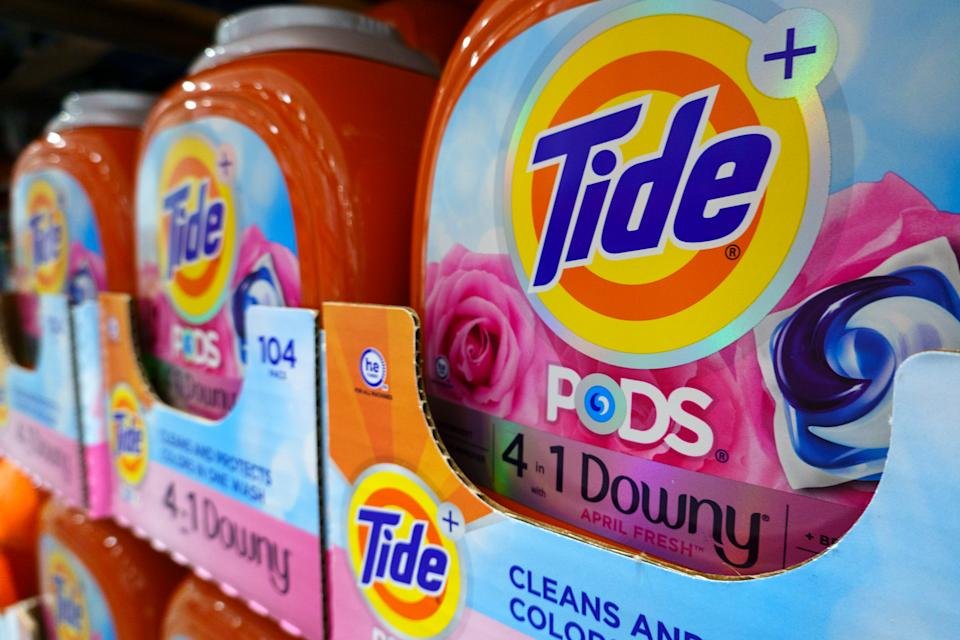
63 million adults are moonlighting as caregivers, with little support
Key Points
- Caregiving Crisis: A record 63 million Americans, nearly 1 in 4 adults, provide care to adults or children with health needs, up from 53 million in 2020, as per AARP and National Alliance for Caregiving reports.**
- Financial Strain: Nearly half of caregivers face financial difficulties, with many taking on debt, depleting savings, stopping savings, or delaying bill payments.**
- Workplace Challenges: Over 60% of caregivers balance employment with caregiving, often reducing hours, taking unpaid leave, or quitting jobs due to inflexible work environments.**
- Personal Impact: Caregivers like Anita Robinson, who retired early to care for her mother, face career setbacks and financial insecurity, with plans for "unretirement" to sustain future needs.**
- Gender Disparity: Women, comprising 61% of caregivers, face greater retirement security risks due to reduced savings and longer lifespans, exacerbating financial recovery challenges.**
Summary
Anita Robinson, a former senior partner at a tech firm, took early retirement at 57 to care for her 83-year-old mother, who suffers from blindness, dementia, and multiple cancers. Her story reflects a growing caregiving crisis in America, where 63 million adults—nearly 1 in 4—now provide care, a sharp rise from previous years, according to AARP and the National Alliance for Caregiving. This role often brings severe financial strain, with nearly half of caregivers accruing debt, depleting savings, or delaying bills. Over 60% juggle employment, frequently reducing hours or quitting, as Robinson did when her company offered no remote work flexibility post-FMLA leave. Women, who make up 61% of caregivers, face heightened retirement insecurity due to reduced savings. The workplace poses further challenges, with caregiving hindering career advancement and many hesitant to disclose their status due to stigma. Robinson, living off savings and a small pension, plans to return to work to avoid depleting her nest egg, staying active through pro bono projects. Experts highlight the emotional, financial, and structural toll of caregiving, urging better support systems like respite care and paid leave to address this pervasive issue impacting families and the workforce.
yahoo
August 2, 2025
Stocks
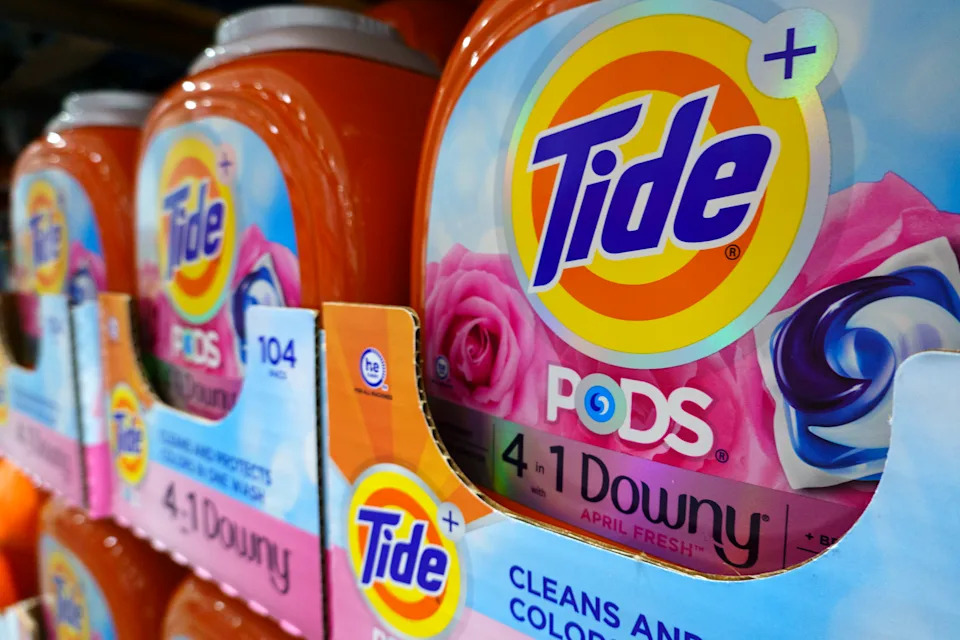
From refrigerators to snacks to detergent, US households are looking for low-cost alternatives everywhere
Key Points
- Consumer Behavior Shift: Americans are increasingly seeking lower prices, impacting purchases from appliances to household essentials, as noted by companies like Whirlpool, Procter & Gamble, PepsiCo, and Coca-Cola.**
- Whirlpool Challenges: Whirlpool reported a 5% year-over-year decline in major domestic appliance sales in North America, missed earnings expectations, cut guidance, and saw its stock drop over 13%.**
- P&G Adjustments: Procter & Gamble observed a cautious consumer trend with trade-downs to less premium products within their portfolio, alongside plans to cut 7,000 jobs by 2027 to reinvest in innovation.**
- Economic Pressures: Macroeconomic uncertainty, high interest rates, inflation fears, and potential tariffs are dampening consumer confidence, as per data from the Conference Board.**
- Beverage Industry Response: Coca-Cola and PepsiCo are focusing on affordable options and value investments to retain consumers amidst economic pressures.**
Summary
American consumers are prioritizing lower prices across various sectors, from appliances to everyday essentials, as highlighted by recent comments from major companies like Whirlpool, Procter & Gamble (P&G), PepsiCo, and Coca-Cola. Whirlpool, facing a 5% drop in North American appliance sales and missing earnings targets, saw its stock plummet over 13%, with CEO Marc Bitzer citing macroeconomic uncertainty and suppressed demand. P&G's CEO Jon Moeller noted a cautious consumer base trading down to less premium products, while announcing a restructuring plan involving 7,000 job cuts by 2027 to fund innovation. Consumer confidence remains low, pressured by inflation fears, high interest rates, and potential tariffs, according to the Conference Board. In the food and beverage sector, Coca-Cola and PepsiCo are adapting by offering more affordable options and focusing on value to retain customers. This widespread shift in consumer behavior reflects broader economic concerns impacting purchasing decisions across industries.
yahoo
August 2, 2025
Stocks

Carvana’s 10,000% Rally From Low Deals $7 Billion Blow to Shorts
Key Points
- Carvana Co.'s shares reached an all-time high, rising over 10,000% from a late 2022 low, delivering significant losses to short sellers totaling $7.42 billion since the end of 2022.
- The stock's surge follows strong Q2 results, with record-setting revenue fueling optimism for a turnaround at the online used-car dealer.
- Carvana's online business model and favorable market conditions, including tariff-driven demand for used cars, have contributed to its high valuation compared to traditional auto dealers.
- Despite a 5.7% drop on Friday, the stock ended the week over 10% higher, with analysts predicting further growth potential.
- Traditional competitors like CarMax, AutoNation, and Lithia Motors have not seen similar gains, with CarMax down 7% since 2022.
Summary
Carvana Co. has experienced a remarkable recovery, with its stock soaring over 10,000% from a late 2022 low to an all-time high, inflicting $7.42 billion in losses on short sellers. The online used-car dealer's recent surge follows blockbuster second-quarter results, including record revenue, signaling a potential turnaround. Carvana's innovative online platform, which allows customers to buy cars remotely, sets it apart from traditional brick-and-mortar competitors like CarMax and AutoNation, contributing to its high valuation. Market conditions, such as increased demand for used cars due to tariffs, have further boosted its performance. Despite a 5.7% drop on Friday, the stock ended the week up over 10%, with analysts optimistic about future growth. This rally, reminiscent of retail-trading frenzies like GameStop, highlights the risks of shorting volatile stocks and marks Carvana as one of the most dramatic recoveries in recent market history.
yahoo
August 2, 2025
Stocks
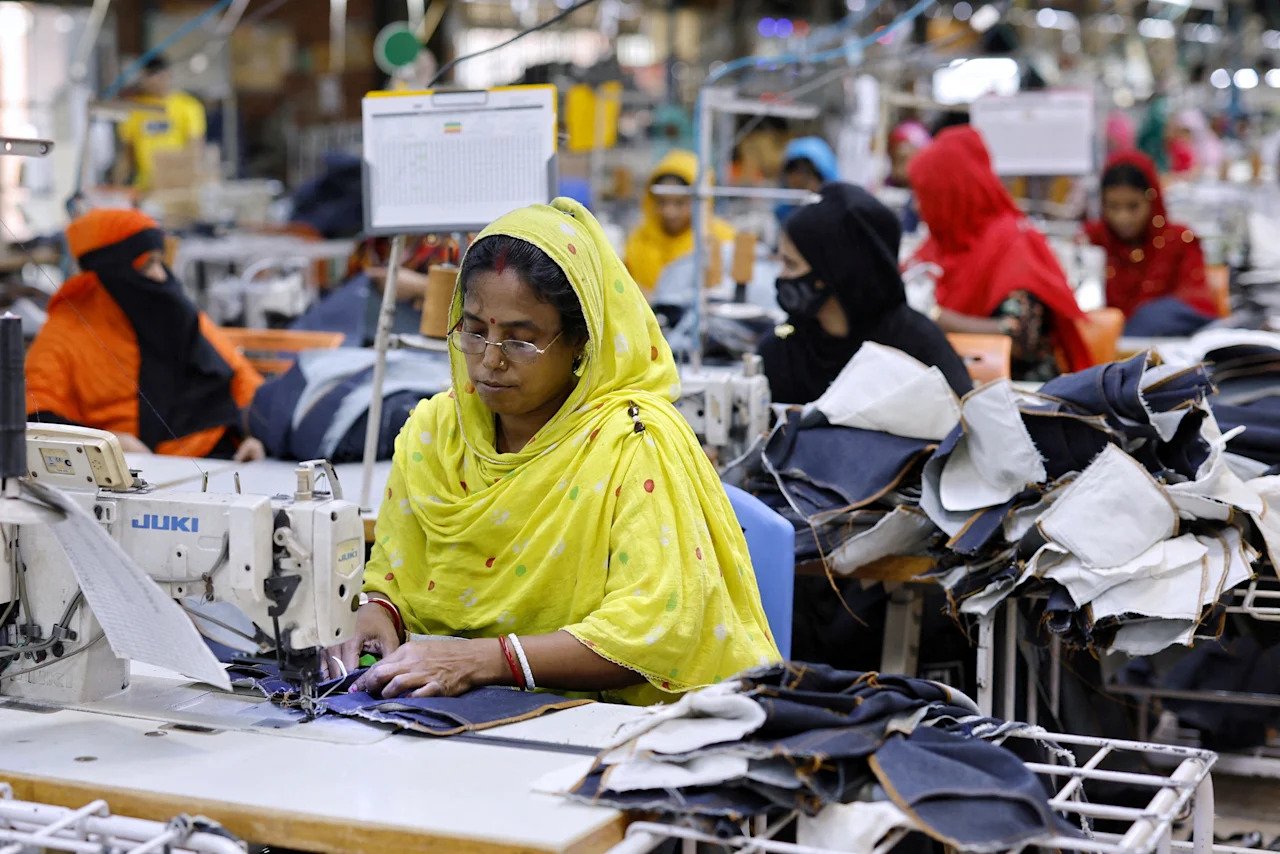
Trump tariffs live updates: Trump outlines sweeping new tariffs for dozens of trade partners
Key Points
- Trump's Tariff Overhaul: President Trump has signed orders to impose significant tariff hikes, including a 35% rate on Canada effective immediately and a baseline 10% rate across all trade partners, with many new "reciprocal" rates starting August 7.**
- Global Trade Impact: The tariffs affect over 70 countries with rates ranging from 15% to 40%, causing a drop in global stocks and reshaping the US trade landscape.**
- Specific Country Deals: Mexico received a 90-day reprieve on higher tariffs, South Korea agreed to a 15% import tariff with no US export tariffs, and Brazil faces 50% tariffs on many goods, excluding key imports like orange juice and aircraft parts.**
- Ongoing Negotiations: Trade talks continue with China, facing an August 12 deadline, while India faces 25% tariffs plus penalties, and the US-EU deal imposes 15% tariffs with unresolved issues.**
- Sector-Specific Tariffs: High tariffs target Swiss exports at 39%, impacting industries like watches, while copper products face 50% tariffs from August 1, and low-value import exemptions under $800 are ended.**
Summary
President Trump has initiated a major overhaul of US trade policy by imposing sweeping tariffs on over 70 countries, ranging from 10% to 40%, as part of his plan to reshape global trade. Key actions include a 35% tariff on Canada, effective immediately, and specific rates like 15% on South Korea and the EU, alongside a 50% tariff on Brazilian goods with exemptions for certain imports. Mexico received a temporary reprieve, while negotiations with China and India continue amid looming deadlines and penalties. The tariffs, which also target sectors like Swiss watches (39%) and copper products (50%), have led to a decline in global stocks and raised concerns about economic fallout, with Swiss industries warning of job losses. Additional measures include ending exemptions for low-value imports and addressing transshipment issues, though details on enforcement remain unclear. This aggressive trade strategy, accompanied by ongoing talks and last-minute delays in implementation for some rates, signals a significant shift in the US trade landscape with potential impacts on economies worldwide.
yahoo
August 1, 2025
Stocks

July jobs report expected to show hiring slowed while unemployment rate ticked higher
Key Points
- July Jobs Report Expectations: Economists anticipate nonfarm payrolls to increase by 105,000 in July, a decrease from June's 147,000, with the unemployment rate expected to rise to 4.2% from 4.1%.**
- Labor Market Slowing: Recent data indicates a cooling labor market, with private payrolls growing by 104,000 in July per ADP, though overall hiring momentum has slowed.**
- Federal Reserve's Stance: The Fed held interest rates steady in July, with Chair Jerome Powell describing the labor market as "solid" despite signs of slowing job creation.**
- Consumer Spending as Key Indicator: ADP's chief economist suggests that consumer spending will be a critical measure of labor market health amidst recalibration to lower hiring levels.**
- Job Openings and Hiring Rates: June data from the Bureau of Labor Statistics showed a decline in job openings to 7.44 million and a hiring rate drop to 3.3%, the lowest since November 2024.**
Summary
The upcoming July jobs report, set for release on Friday at 8:30 a.m. ET, is expected to reflect a slowdown in hiring with nonfarm payrolls projected to rise by 105,000, down from June’s 147,000, and an unemployment rate increase to 4.2% from 4.1%. This data comes amid growing investor scrutiny of the US labor market for signs of cooling that might influence the Federal Reserve's interest rate decisions. Recent figures, including ADP’s report of 104,000 private payroll gains in July and a decline in job openings to 7.44 million in June, underscore a moderating labor market. Despite this, Fed Chair Jerome Powell described the market as "solid" after maintaining steady rates in July, noting a balance due to reduced labor supply from lower immigration. Analysts like BofA’s Shruti Mishra view the market as moderating rather than deteriorating, while ADP’s Nela Richardson highlights consumer spending as a key health indicator. Additional data shows hiring rates at their lowest since November 2024, yet layoffs remain low, allowing the Fed to adopt a wait-and-see approach on policy amidst inflation and tariff concerns.
yahoo
August 1, 2025
Stocks
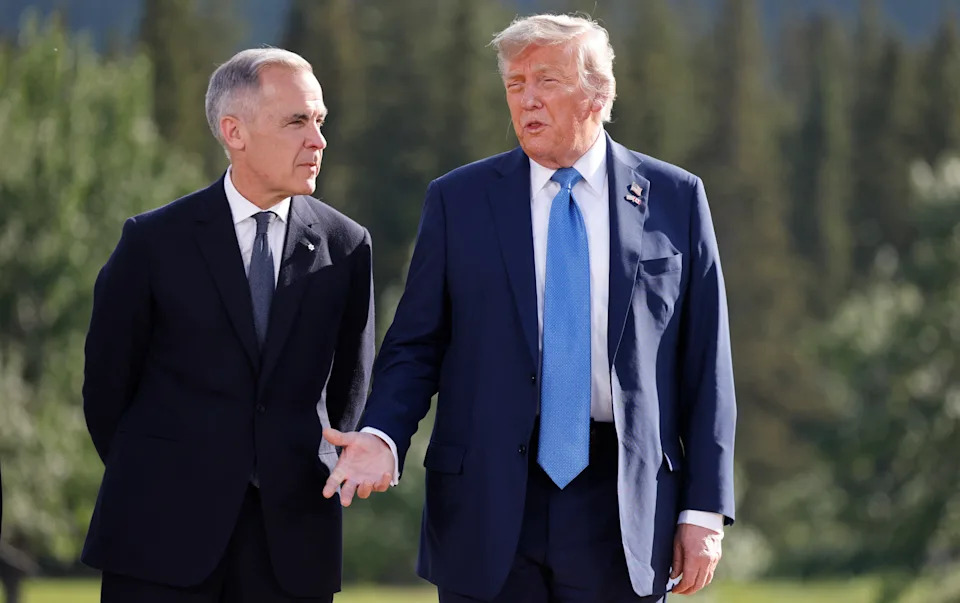
Trump talks with Canada, India and Brazil in a stalemate as his tariff deadline looms
Key Points
- Tariff Deadline: President Trump's tariff agenda faces a critical deadline on August 1, setting a new baseline rate of 15% on most global imports, with higher rates looming for key nations like Canada (35%), India (25%), Brazil (50%), and Mexico (30%).**
- Failed Negotiations: Talks with Canada, India, and Brazil have stalled for diverse reasons, straining relations with major US trading partners and leaving importers facing potential tariff hikes.**
- US-China Relations: A potential 90-day pause on tariff hikes with China is under discussion, with Treasury Secretary Scott Bessent indicating progress toward a deal.**
- Legal Challenges: A federal appeals court will hear arguments on the legality of Trump's authority to impose these tariffs, adding uncertainty to the administration's plans.**
- Economic Impact: While markets remain largely unaffected for now, ongoing trade tensions with significant partners suggest continued negotiations and potential economic repercussions.**
Summary
President Trump's tariff agenda approaches a pivotal August 1 deadline, establishing a 15% baseline rate on most global imports, with higher tariffs threatened for key nations like Canada (35%), India (25%), Brazil (50%), and Mexico (30%). Negotiations with Canada, India, and Brazil have faltered due to differing issues, risking strained relations with major US trading partners and higher costs for importers. Meanwhile, a potential 90-day pause on tariff hikes with China shows promise, as Treasury Secretary Scott Bessent hints at an imminent deal. Legal challenges also loom, with a federal appeals court set to review Trump's authority to impose these tariffs. Despite limited immediate economic impact—partly due to agreements like the USMCA allowing duty-free trade with Canada and Mexico—Trump's rhetoric, including social media criticisms of Canada and India, underscores ongoing tensions. Brazil faces particularly harsh 50% tariffs linked to political disputes over former President Jair Bolsonaro's trial, drawing criticism for the use of emergency powers. While markets remain focused on Big Tech earnings, unresolved trade issues with significant partners suggest negotiations will persist, shaping future US economic relations.
yahoo
July 31, 2025
Stocks
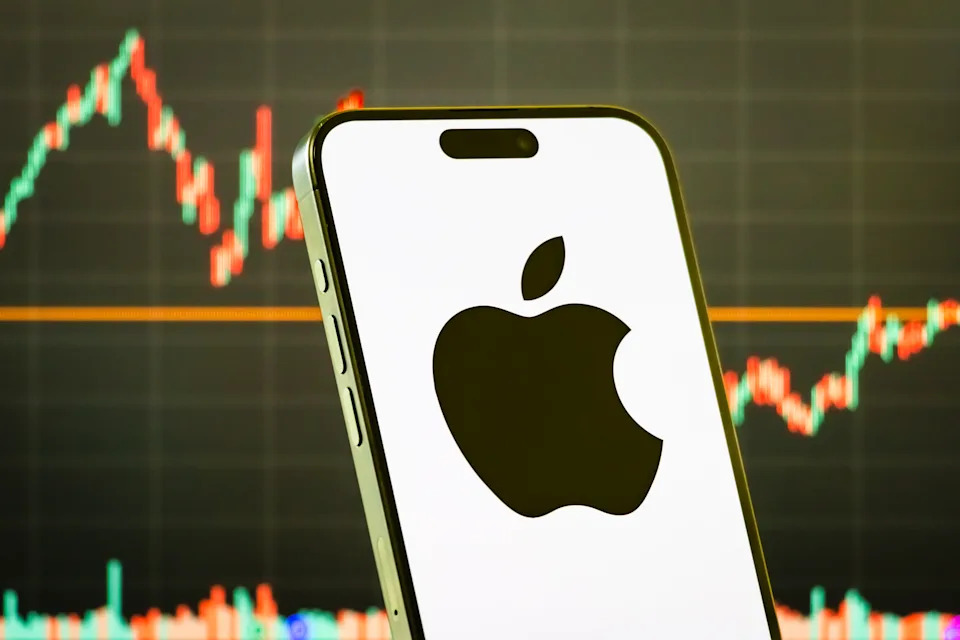
Apple Q3 earnings to give Wall Street better view of tariff impact, AI top of mind
Key Points
- Apple (AAPL) is set to report Q3 earnings with expected EPS of $1.43 and revenue of $89.22 billion, compared to last year's EPS of $1.40 and revenue of $85.7 billion.
- Wall Street is focused on Apple’s AI strategy, tariff-related margin pressures, and the potential impact of a 25% tariff on iPhones if production doesn’t shift to the US.
- The upcoming September iPhone launch event is anticipated to feature a redesigned, slimmer iPhone, potentially boosting Q4 sales and margins with a higher starting price.
- Apple faces risks to its $20 billion annual Services revenue from Google’s antitrust lawsuit, which could end their default search agreement in Safari and Siri.
- Criticism mounts over Apple’s slow AI rollout, with analysts warning that lagging innovation could damage its reputation in a rapidly evolving tech landscape.
Summary
Apple (AAPL) is gearing up for its Q3 earnings report, with Wall Street anticipating an EPS of $1.43 and revenue of $89.22 billion, up from last year’s figures. Investors are keenly watching for updates on Apple’s AI initiatives and the impact of potential tariffs, including a threatened 25% levy on iPhones if production remains overseas. Margin pressures from these costs are a concern, though a redesigned, slimmer iPhone expected at the September launch could drive Q4 sales and higher margins. However, Apple faces challenges with its $20 billion Services revenue tied to Google’s search deal, which is at risk due to an ongoing antitrust lawsuit. Additionally, the company is under scrutiny for its slow AI progress, with analysts warning that competitors’ advancements could tarnish Apple’s innovative reputation if it doesn’t adapt swiftly. The earnings report and upcoming product unveilings will be critical in shaping investor confidence amidst these multifaceted pressures.
yahoo
July 31, 2025
Stocks

Trump tariffs live updates: Trump announces trade deal with South Korea featuring 15% tariff rate
Key Points
- Trade Deal with South Korea: President Trump announced a trade agreement with South Korea featuring a 15% tariff on their imports to the US, while US exports face no tariffs, alongside a $350 billion investment from South Korea in the US.**
- Tariff Actions: Trump imposed 50% tariffs on goods from Brazil and copper imports, threatened a 25% tariff on Indian goods with additional penalties, and ended the de minimis exemption for low-value imports under $800.**
- Trade Talks and Deadlines: US-China trade talks in Sweden showed progress but no immediate tariff delay, with a decision pending by August 12, while a US-EU trade deal faces criticism and a tight deadline.**
- Impact on Prices: Federal Reserve Chair Jerome Powell noted early signs of tariff-driven inflation, with companies like Procter & Gamble and Mondelez planning price hikes to offset costs.**
- Pakistan Deal: Trump announced a deal with Pakistan to develop oil reserves, amid tensions with India over tariffs and geopolitical ties.**
Summary
President Trump has initiated a flurry of trade actions, announcing a deal with South Korea that imposes a 15% tariff on their imports while exempting US exports, coupled with a $350 billion investment from South Korea in the US. Additionally, Trump imposed 50% tariffs on Brazilian goods and copper imports, threatened 25% tariffs on Indian products with further penalties due to Russia ties, and ended the de minimis exemption for low-value imports under $800. Trade talks with China in Sweden showed progress but no immediate tariff delay, with a decision due by August 12, while a rushed US-EU trade deal faces criticism. Federal Reserve Chair Jerome Powell highlighted early tariff-driven inflation, with companies like Procter & Gamble planning price increases. Trump also revealed a deal with Pakistan to develop oil reserves, escalating tensions with India. These moves, including a refusal to extend tariff deadlines, signal a hardline stance on trade, impacting global economies and consumer prices.
yahoo
July 31, 2025
Stocks
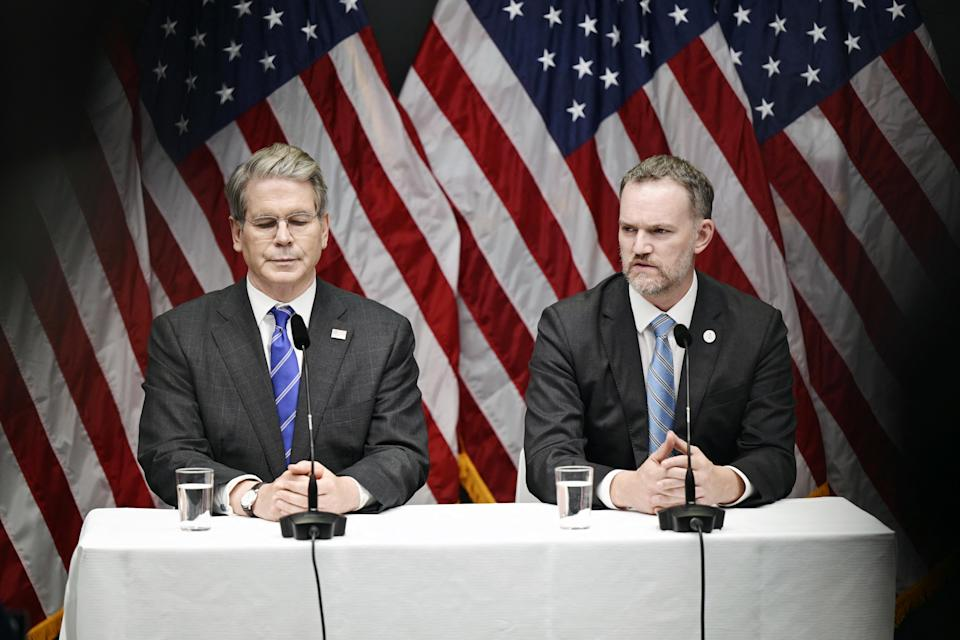
Trump says Powell must lower interest rates 'now' following GDP uptick
Key Points
- President Trump is pressuring Federal Reserve Chairman Jerome Powell to lower interest rates following a stronger-than-expected 3% GDP growth in the second quarter of 2025.
- Despite Trump's claims of no inflation, recent data showing a rise in June is likely to keep the Fed's monetary policy unchanged for now.
- Trump's tariff agenda and fluctuating GDP readings, influenced by import surges, remain concerns for the central bank.
- Investors and analysts are watching for potential signals from Powell or dissenting Fed governors about rate cuts in September or later this year.
- Trump's persistent criticism of Powell is unlikely to subside until interest rates are lowered to his satisfaction.
Summary
President Trump is intensifying pressure on Federal Reserve Chairman Jerome Powell to cut interest rates following a robust 3% GDP growth in the second quarter of 2025, surpassing economists' expectations of 2.6%. Trump hailed the economic rebound as "WAY BETTER THAN EXPECTED" on Truth Social, insisting that Powell must act "now" to lower rates, citing no inflation and the need for people to buy and refinance homes. Despite Trump's claims, recent inflation data from June suggests the Fed will likely maintain current rates in the immediate term. The GDP surge partly reflects the impact of Trump's tariff policies, which previously contributed to a 0.5% contraction in the first quarter due to import surges. While Trump remains optimistic after a recent meeting with Powell, expecting a shift toward lower rates, Powell has shown no immediate inclination to change policy. Investors are closely monitoring for hints of future rate cuts, possibly in September, while inflation and Trump's trade agenda continue to pose challenges for the central bank. Trump's persistent critique of Powell is expected to continue until his demands for lower rates are met, as evidenced by his comments during a Federal Reserve tour.
yahoo
July 30, 2025
Stocks

Microsoft to report Q4 earnings as Wall Street looks for continued AI growth
Key Points
- Microsoft (MSFT) is set to report its fiscal Q4 earnings, with Wall Street expecting adjusted EPS of $3.37 and revenue of $73.89 billion, reflecting strong growth in AI and cloud sectors.
- The Intelligent Cloud segment, including Azure, is projected to reach $29.09 billion in revenue, a 22% increase, with AI sales contributing significantly to this growth.
- Google's recent strong Q2 results, driven by cloud revenue and a $10 billion AI investment increase, may signal positive trends for Microsoft's upcoming earnings.
- Analysts predict Microsoft's AI investments will peak in fiscal 2026, with AI-powered Copilot software seen as a potential growth driver.
- Microsoft's relationship with OpenAI faces challenges over equity and structural changes, which could impact OpenAI's $20 billion investment prospects.
Summary
Microsoft (MSFT) is gearing up to release its fiscal Q4 earnings, with analysts forecasting adjusted EPS of $3.37 and revenue of $73.89 billion, driven by robust growth in its AI and cloud businesses. The Intelligent Cloud segment, including Azure, is expected to hit $29.09 billion, a 22% rise, with AI sales playing a significant role. Following Google's strong Q2 performance, fueled by cloud revenue and a boosted $10 billion AI investment, optimism surrounds Microsoft’s potential for similar gains. However, while AI use cases are expanding in FY25, experts like Wedbush’s Dan Ives suggest FY26 will be the pivotal year for Microsoft’s AI growth, with tools like Copilot poised to drive future revenue. Despite a 21% year-to-date stock increase, Microsoft faces hurdles in its partnership with OpenAI, as disputes over equity and OpenAI’s restructuring into a public benefit corporation could jeopardize $20 billion in investments. This earnings report will be a critical indicator of Microsoft’s trajectory in the competitive AI landscape.
yahoo
July 30, 2025
Stocks

Meta to report Q2 earnings amid AI investment push
Key Points
- Meta (META) is set to report Q2 earnings with expected EPS of $5.89 and revenue of $44.83 billion, up from last year's $5.16 EPS and $39.07 billion.
- The company is heavily investing in AI, spending hundreds of billions on data centers like Hyperion and hiring top talent from OpenAI, Apple, and other tech firms.
- Advertising revenue is projected to increase by 15% to $44.09 billion, with early AI-driven ad improvements showing a 5% boost in conversion rates.
- Meta is expanding into AI-powered smart glasses, including Ray-Ban Meta and Oakley Meta, as part of its "personal superintelligence" mission.
Summary
Meta Platforms, Inc. (META) is gearing up for its Q2 earnings report, with analysts anticipating an EPS of $5.89 and revenue of $44.83 billion, a significant rise from last year’s figures. The company, under CEO Mark Zuckerberg, is aggressively investing in AI, spending hundreds of billions on multi-gigawatt data centers like Hyperion and recruiting top talent from OpenAI, Apple, and other firms to bolster its Superintelligence Lab. This AI push is already yielding results, with a 5% increase in ad conversion rates and a 15% expected rise in advertising revenue to $44.09 billion. Additionally, Meta is venturing into AI-driven smart glasses, including Ray-Ban Meta and Oakley Meta, aligning with Zuckerberg’s vision of "personal superintelligence" for all. While the hefty AI investments continue, early returns and Wall Street’s optimism—highlighted by BofA Global Research’s positive outlook on Meta’s AI integration into advertising—suggest potential revenue upside. Meta’s strategic focus on AI and innovative products positions it as a key player in the tech landscape, despite the stock’s recent 2.46% dip to $700.00 at close on July 29.
yahoo
July 30, 2025
Stocks
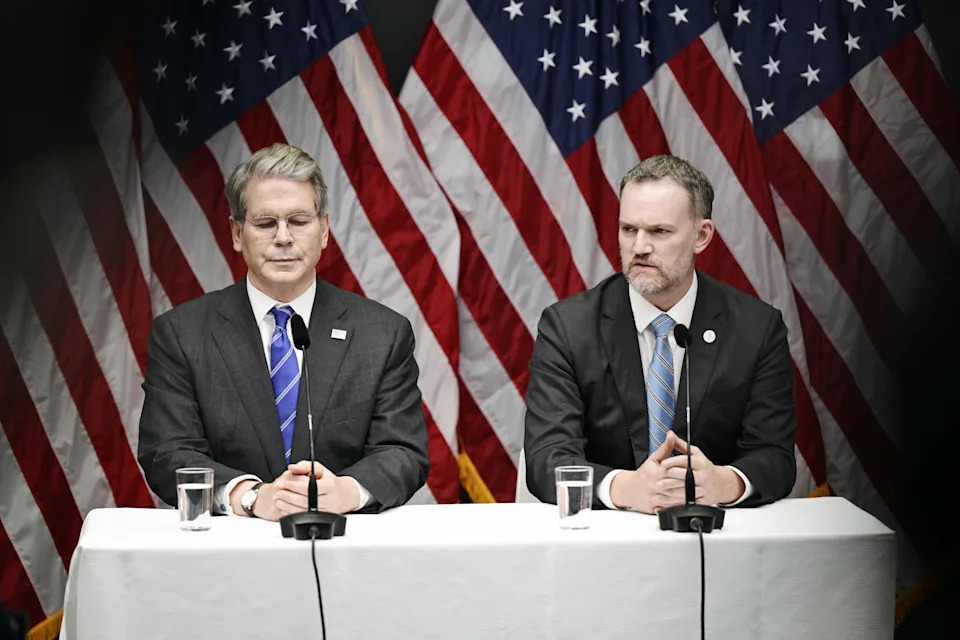
No tariff pause announced after US-China talks, with Trump set to make the 'final call'
Key Points
- US and Chinese negotiators concluded two days of trade talks in Stockholm, Sweden, without an immediate announcement on further tariff delays, leaving markets anxious about potential duty increases set for August 12.
- Treasury Secretary Scott Bessent described the talks as "very constructive," with a possible 90-day tariff pause still under consideration, pending President Trump's final decision.
- Both sides discussed a range of issues, including semiconductors, rare earth minerals, and Chinese export controls, but did not plan a face-to-face meeting between Trump and Xi Jinping.
- Trump's team emphasized that tariff rates could revert to higher levels seen earlier this year if no agreement is reached, with the president holding the ultimate authority to decide.
- This meeting marks the third in recent months between US and Chinese trade teams, building on previous discussions in Geneva and London, with ongoing communication expected.
Summary
US and Chinese trade negotiators concluded two days of talks in Stockholm, Sweden, without a definitive announcement on extending a tariff pause, raising concerns as higher duties loom on August 12. Treasury Secretary Scott Bessent called the discussions "very constructive," hinting at a potential 90-day delay, though President Trump will make the final call. Topics ranged from semiconductors, including Nvidia's AI chip exports to China, to rare earth minerals and Russian oil consumption, but no plans for a Trump-Xi meeting were set. Trump's team warned that tariffs could revert to triple-digit levels seen earlier this year if no deal is reached. This third round of talks in recent months builds on prior meetings in Geneva and London, with both sides committing to ongoing dialogue. Meanwhile, Trump's broader trade agenda includes a new EU tariff pact and negotiations with other nations like India and Canada before a self-imposed deadline. Markets remain on edge, hopeful for a delay to avoid economic disruption, as analysts suggest a pause could stabilize investor sentiment. The outcome of these talks, alongside Trump's decisions, will significantly impact global trade dynamics and economic forecasts in the coming weeks.
yahoo
July 30, 2025
Stocks

Gunman Kills Four and Himself at Midtown Manhattan Building
Key Points
- Tragic Incident: A gunman killed at least four people, including a police officer and a Blackstone employee, before taking his own life at 345 Park Ave. in Midtown Manhattan.**
- Location and Impact: The attack occurred in an office tower housing major firms like Blackstone, Rudin Management, the NFL, and KPMG, leading to widespread chaos and fear.**
- Shooter Details: Identified as 27-year-old Shane Tamura from Nevada, the suspect drove across the country, entered the building with a rifle, and fired on multiple floors before dying on the 33rd floor.**
- Response and Mourning: The city mourns the loss of innocent lives, with Mayor Eric Adams honoring the slain officer, Didarul Islam, as a hero who put his life on the line.**
- Lockdown and Fear: Employees at Blackstone and nearby firms like Jefferies and Citadel went into lockdown, with some barricading themselves in offices during the terrifying ordeal.**
Summary
A devastating shooting unfolded at 345 Park Ave. in Midtown Manhattan, where a gunman killed at least four people, including a police officer and a Blackstone employee, before taking his own life on the 33rd floor, occupied by Rudin Management. The suspect, identified as 27-year-old Shane Tamura from Nevada, drove across the country and entered the office tower—home to firms like Blackstone, the NFL, and KPMG—carrying a rifle. The attack began in the lobby, where four were shot, and continued on the 33rd floor, where another victim was killed. The incident sparked chaos, with police cordoning off the area and employees barricading themselves in offices or hiding in pantries. Nearby firms like Jefferies and Citadel also went into lockdown. Authorities are investigating Tamura’s motive, while the city mourns the loss of innocent lives. Mayor Eric Adams honored the fallen officer, Didarul Islam, a three-year veteran and immigrant from Bangladesh, as a true hero. The tragedy left a profound impact, with employees sharing worried messages and images of makeshift barricades during the harrowing event.
yahoo
July 29, 2025
Stocks
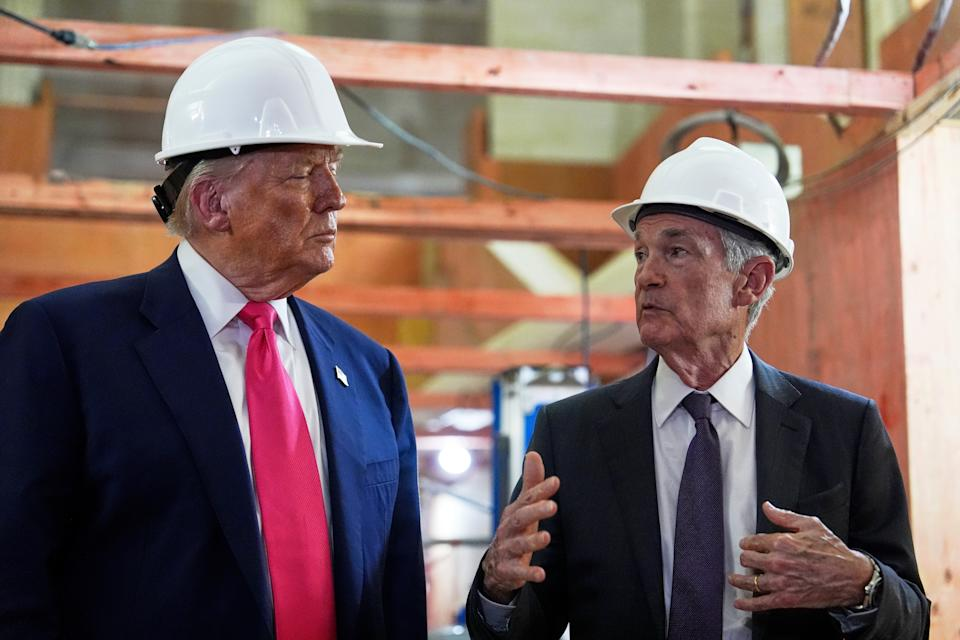
Trump says he will give Putin new 10-12 day truce deadline
Key Points
- Trump's New Deadline: US President Donald Trump has set a new, shortened deadline of 10 to 12 days for Russian leader Vladimir Putin to reach a truce with Ukraine, threatening economic penalties if unmet.**
- Secondary Sanctions Threat: Trump is considering secondary sanctions on countries like India and China that buy Russian exports such as oil, aiming to pressure Moscow by targeting its economic supporters.**
- Growing Frustration: Trump's latest actions reflect increasing impatience with Putin, despite past diplomatic efforts and personal conversations, as Russian attacks on Ukraine continue unabated.**
- Previous Threats Unmet: An earlier 50-day deadline and threats of 100% tariffs on Russia failed to halt the conflict, with Putin intensifying missile and drone strikes on Ukrainian cities.**
- NATO and Allied Support: NATO allies, including Germany, are in talks to provide additional air-defense systems to Ukraine, as Zelenskiy prioritizes protection against Russian attacks.**
Summary
US President Donald Trump has intensified pressure on Russian leader Vladimir Putin by announcing a new 10 to 12-day deadline for a truce with Ukraine, threatening economic penalties if unmet. Speaking in Scotland alongside UK Prime Minister Keir Starmer, Trump expressed frustration with Putin’s refusal to ceasefire, despite previous diplomatic efforts and a failed 50-day deadline set in July. He is now considering secondary sanctions on nations like India and China for purchasing Russian oil, viewing such trade as support for Moscow’s war economy. Trump’s growing impatience is evident as he shifts focus from Ukrainian leader Volodymyr Zelenskiy to Putin, criticizing the latter’s insincerity despite personal conversations. Meanwhile, NATO allies, including Germany, are working to bolster Ukraine’s air defenses with systems like Patriot amid ongoing Russian attacks. Trump’s threats echo Congressional proposals for steep tariffs on countries trading with Russia, though he has previously held off to preserve negotiations. He also highlighted Russia’s potential wealth from resources like rare earths, lamenting its focus on war over prosperity. Despite prisoner exchanges, no progress has been made toward ending the conflict that began with Russia’s invasion of Ukraine in February 2022.
yahoo
July 28, 2025
Stocks
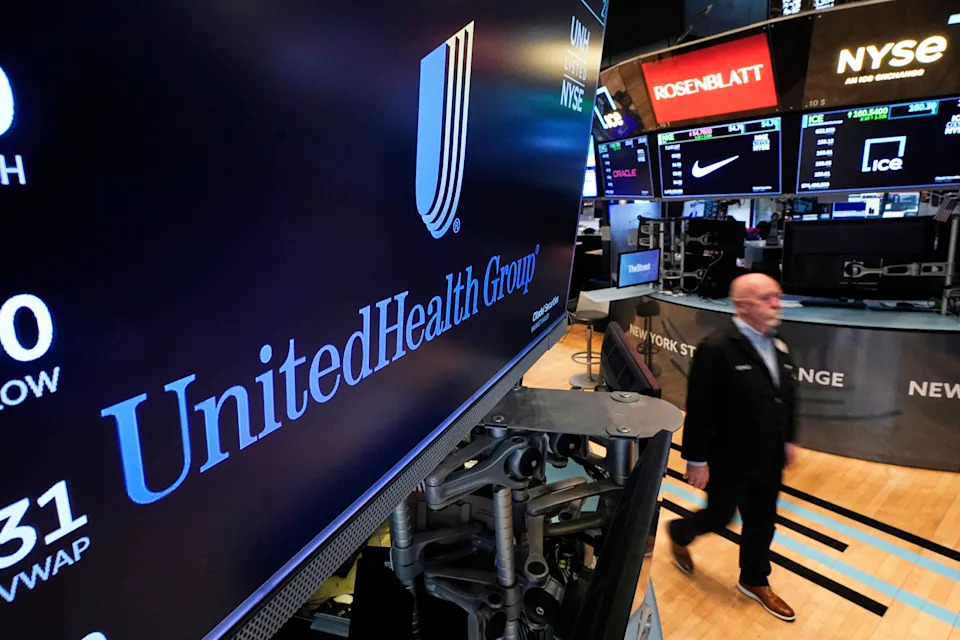
Health insurance companies have a problem — people are using their plans more
Key Points
- Centene (CNC) reported a surprising Q2 adjusted loss of $79 million, with a health benefits ratio increase to 93% from 87.6% last year, reflecting higher medical costs relative to premium revenue.
- Elevance Health (ELV) and Molina Healthcare (MOH) also faced similar challenges, with rising benefit expense ratios and lowered earnings guidance due to increased costs in Medicaid and Medicare programs.
- UnitedHealth Group (UNH) is expected to report a medical care ratio increase to 89.3% in Q2, signaling tighter margins, while facing a DOJ investigation over potential fraudulent billing in Medicare Advantage.
- Stock reactions varied, with Centene recovering to a 6% gain after an initial 15% drop, while Elevance and Molina stocks remained depressed after significant declines post-earnings.
- The healthcare sector (XLV) is the worst-performing in the S&P 500 this year, driven by industry-wide pressures from rising medical costs and narrow profit margins.
Summary
Centene (CNC) shocked investors with a Q2 adjusted loss of $79 million, driven by a health benefits ratio surge to 93% from 87.6%, indicating higher medical costs against premiums. This issue extends across the industry, with Elevance Health (ELV) and Molina Healthcare (MOH) reporting similar spikes in benefit expense ratios and lowered earnings outlooks, largely tied to Medicaid and Medicare programs. UnitedHealth Group (UNH), set to release Q2 earnings, faces expectations of a medical care ratio rise to 89.3%, alongside a DOJ probe into potential fraudulent billing in Medicare Advantage, which has already dented its stock by 4.7%. Stock reactions highlight market unease, with Centene recovering to a 6% gain after an initial 15% drop, while Elevance and Molina stocks remain depressed after significant declines. Centene's CEO reinstated earnings guidance and reported $48.7 billion in revenue, surpassing estimates, with hopes of improved Medicaid margins. The healthcare sector (XLV) struggles as the S&P 500’s worst performer this year, grappling with narrow margins and accelerating medical cost trends. UnitedHealth’s upcoming earnings call will be critical, as investors seek clarity on both financial pressures and legal challenges, with potential long-term impacts hinging on the DOJ investigation’s outcome.
yahoo
July 28, 2025
Stocks

Wall Street bull calls for 11% rally in S&P 500 to end 2025 as trade 'uncertainty' subsides
Key Points
- Oppenheimer's John Stoltzfus raised the S&P 500 year-end target to 7,100 from 5,950, the highest on Wall Street, anticipating an 11% rally.
- Progress in trade negotiations, including a 15% tariff deal with the EU, has reduced market uncertainty, prompting the target revision.
- S&P 500 earnings are projected at $275 per share for 2025, with a forward P/E ratio of 25.8, above historical averages.
- Corporate earnings resilience and upward revisions in guidance (41% of companies raised full-year forecasts) support continued bullishness.
- Analysts expect S&P 500 earnings growth of 13.9% in 2026, with strong fundamentals driving a V-shaped market recovery.
Summary
Wall Street's optimism for the S&P 500 has surged, with Oppenheimer's chief market strategist John Stoltzfus raising his year-end target to 7,100 from 5,950, the highest forecast, implying an 11% rally. This revision, announced after a US-EU trade deal setting a 15% tariff rate, reflects reduced uncertainty from trade negotiations. Stoltzfus projects 2025 earnings at $275 per share with a forward P/E ratio of 25.8, significantly above historical averages. Despite concerns of an overstretched rally, corporate earnings show resilience, with second-quarter growth at 6.4% and 41% of companies raising full-year guidance. Analysts anticipate 13.9% earnings growth in 2026, while strategists like Citi’s Stuart Kaiser and Morgan Stanley’s Mike Wilson highlight strong fundamentals and a V-shaped recovery akin to 2020. This bullish outlook underscores confidence in sustained market momentum over the next 6-12 months.
yahoo
July 28, 2025
Stocks